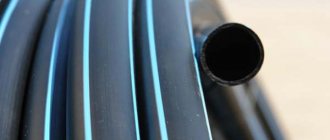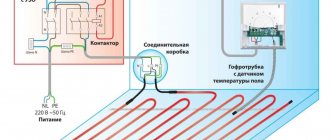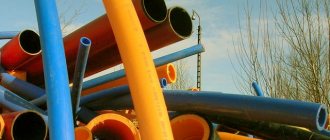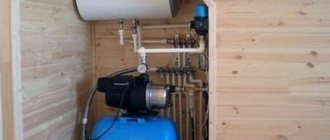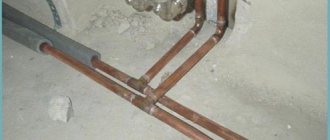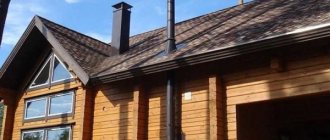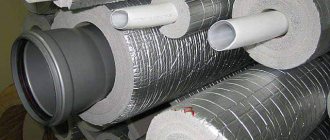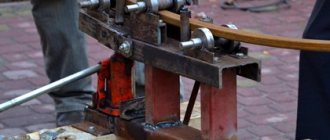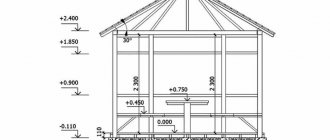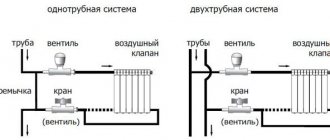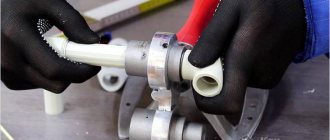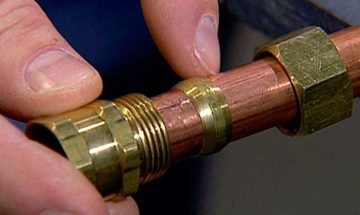
Everyone knows that various technologies and materials can be used for the installation of pipelines: steel and its types, metal-plastic, plastic.
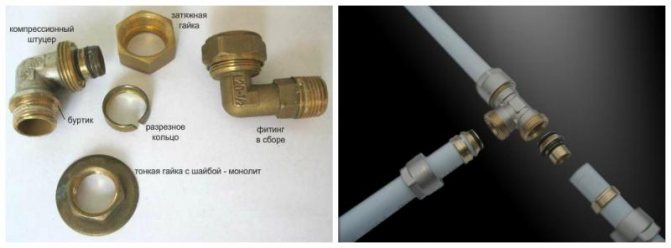

Anyone who has ever faced the issue of installing pipes knows that copper pipes are very reliable and practical - they do not corrode, their use excludes the release of toxic and harmful substances and compounds, they are striking in their plasticity and elasticity, and can withstand heavy loads. Threaded fittings for copper pipes are the best connection method, although others are practiced, such as welding or compression.
Threaded fittings are used when there is a need for frequent assembly and disassembly of the pipeline, focal turns, the need for branches, rasstroy, corners, joints of pipes of the same and different diameters. They differ from the rest by the presence of an internal and external thread, which guarantees the quality of the connection. Since threaded fittings are subject to constant inspection, they are used in places where access is not difficult.
They are also indispensable for the repair or reconstruction of the water supply system. The thread of the fitting is often cylindrical, the same as on the pipe to be connected. Their main advantage is the possibility of repeated use.
Threaded fittings
Below we will look at the types of fittings for copper pipes.
According to the material of manufacture, threaded products are divided into:
- uncoated products zinc-plated (galvanized) chrome-plated (chrome-plated) nickel-plated (nickel-plated)
In principle, it is understood that the coating enhances the properties of copper and provides additional protection and strength to the connection, therefore it is more reliable and practical.
By design, threaded fittings are divided into the following types:
- tees; elbows; plugs; couplings; nipples; bends; crosses and others.
In addition to copper, they are made from brass, stainless steel, cast iron, bronze and other metals, compounds, materials, including plastic and metal-plastic.
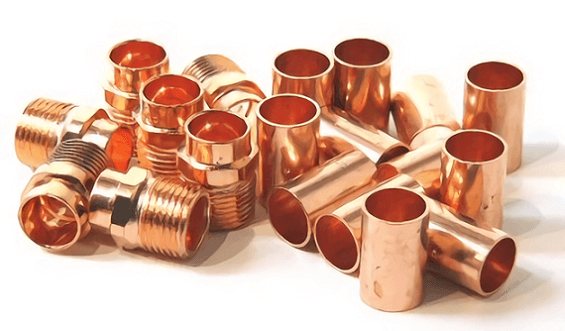

Types of threaded fittings
Features of the connection of copper pipes
When installing using crimp fittings, use brass or bronze products with a special ferrule, which is located inside the fitting. The connection is made using a wrench. A little effort - and even for someone who has never installed a pipeline, everything will come out without problems and the first time.
A significant disadvantage of the crimp connection method is a low degree of reliability - such a connection is categorically inapplicable in the presence of increased pressure in the pipes. Prevention, expressed in tightening the nuts, carried out regularly, will help extend the life of such a pipeline. It often happens that during preventive tightening, deformation of the fittings occurs, do not despair - just replace the broken product.
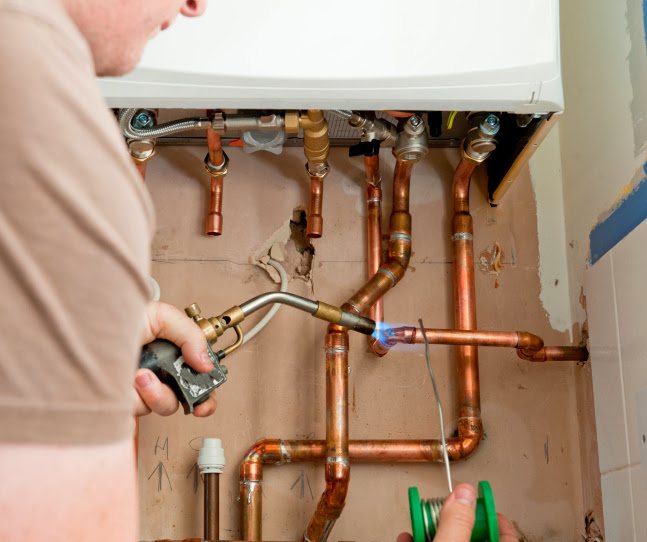

Threaded copper fittings are used where crimping and other options cannot be used - it is impossible to solder pipes or you need to combine pipes made of different types of metal.
So, if you decide to resort to soldering, then it is worth considering - maybe it is better to use threaded fittings for copper pipes. You will not worry about corrosion and deformation due to temperature fluctuations, the presence of substances passing through the pipes.
Installation types
Two types of copper pipeline installation are actively used:
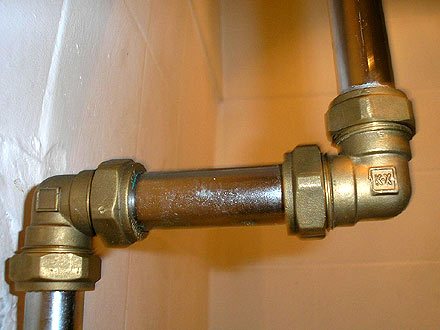

- brazing threaded connection (using ferrules)
The second type is much simpler and less expensive, you do not need additional equipment - just tighten the fitting with a wrench. No fire hazard and surprises.
You will achieve a strong connection without resorting to any hard work! If possible, try to use homogeneous metals (copper or copper alloys), this will help increase the life of the pipeline without additional expenses for repair work.
What is useful for making a connection using threaded fittings?
Nothing supernatural:
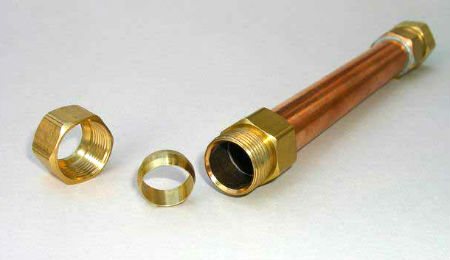

- a hacksaw for metal (or a special cutter), with which you will cut the pipe into pieces of the size you need. Tip: the cutting blade should be changed before work; wrench; pliers; file; calibrator; sandpaper.
Please note that for piping installation, in addition to pipes and fittings, you will need sealing tape.
Features of the installation of a copper pipeline
Installation of copper pipes for water supply is carried out in two ways: by soldering or by means of a threaded connection with a ferrule.
The second method is so easy to perform that it is suitable even for a beginner. In this case, no specific tool is required: copper pipes for the water supply system are easy to mount using ordinary wrenches, with which the connection is tightened. When choosing a fitting, it is necessary to pay attention to the diameter of the copper pipes.
Brazing can make copper pipes more secure, but this method requires some skill and safety.
Copper Pipe Mounting Tools
To carry out the installation of a water supply system from copper pipes, you will need the following set of tools:
- Pipe cutter or hacksaw for metal. The installation of copper pipes involves fitting pipe sections to the desired size before installation. When using a hacksaw at the beginning of work, it is better to put a new blade.
- A hand-held calibrator is required to calibrate copper pipes.
- The torch is needed directly for brazing copper pipes. If the pipes are to be connected using a ferrule, the burner is not needed. It must be equipped with hoses to connect it to the cylinder. If you plan to use the burner for the first time, carefully read the instructions before using it.
Set of tools for installing copper pipes - Wrenches are suitable not only for installing copper plumbing. If the plans include a threaded connection of copper pipes, it will also not be possible to do without a wrench.
- A file is needed to remove burrs.
- Pliers.
- Fine abrasive paper required to remove the oxide film.
- Directly pipes - for the future water supply, a detailed diagram must be drawn up, the required length of pipes must be calculated. If you are performing installation for the first time, copper pipes must be purchased taking into account a small stock. Sometimes copper pipes insulated with PVC are used as a hot water supply pipeline - if this is your case, at the end of the pipe it is necessary to remove the insulation near each connection.
- Fittings for copper pipes. If you plan to solder the pipes, then the fittings should be selected "for soldering", if "twisted" - crimp fittings will do. These can be tees, elbows, couplings, adapters from one diameter to another. It is better to select them according to the scheme drawn up earlier.
- Fum tape for sealing threaded connections.
- Flux and solder for copper pipes.
Materials for the device of a copper pipeline
Materials required:
Installation
During installation, the nut is joined with the fitting, after which the thread is tightened - first by hand, then with a wrench. If joining with pipes made of other materials cannot be avoided, fum tape will come to the rescue, which is screwed onto the threaded part under the fitting.
If you do not want to speed up corrosive processes in the joint, do not use a transition from copper to galvanized or unalloyed steel. Electrochemical processes occurring between these metals can reduce the life of the pipeline.
Problems
Of course, we couldn't do without them. Let's list the most common problems with compression joints.
| Description | Cause | Elimination |
| Leak on metal-plastic with cyclic heating. | During installation, rubber rings are displaced. Cyclic heating led to deformation of the sealing polyethylene at the fitting. | The joint is completely disassembled and reassembled with the O-rings correctly seated. |
| Leaks at any type of soft seal pipe fitting. | The seal has partially lost its elasticity. | Replacing the O-ring. |
| Leakage at socket joint of copper pipes. | A crack in the tube fitted to the cone seal. | The tube is cut, faceted and expanded again. |
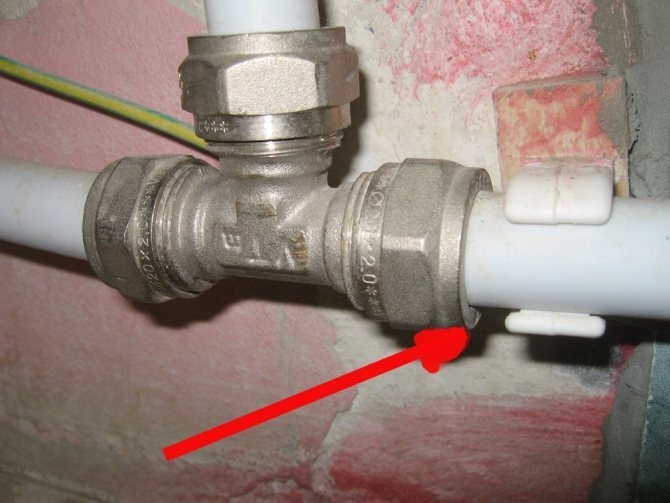

Leakage from under the nut on hot water is a common problem with compression joints on metal-plastic.
How to choose?
In order to properly mount the system, it is necessary to take into account the features of the threaded fittings. You should focus on the purpose of the pipes, if you use high-quality materials, pay attention to all the rules - you are guaranteed a high-quality connection for many years. Find out what the sizes and functions of fittings are, use it in your design.
Choice of fittings
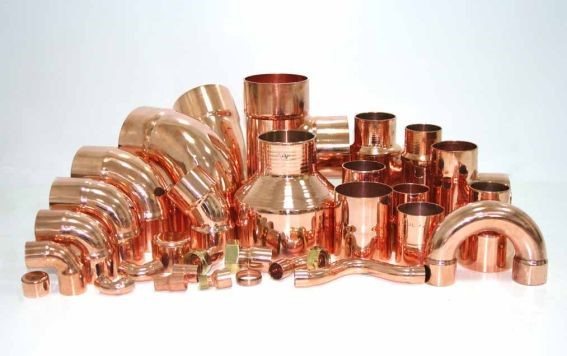

If you need to rotate the structure, the corners will come in handy, if you have planned branching, be sure to purchase tees, crosses, collectors. If you just need to connect two pieces of pipe (of a given or different diameters), stock up on couplings, and, of course, do not forget to buy plugs.
Where to apply?
Copper pipes with threaded fittings are highly competitive, despite the fact that many other types of connections and materials for the manufacture of pipelines have appeared in the world. And all thanks to the almost magical properties of copper - disinfection of water when broadcasting through pipes, the pipe itself does not oxidize, does not rust, products made from it are very reliable, but at the same time plastic, characterized by resistance to temperature extremes and fluctuations from high to low.
Where is the area of application of copper pipes?
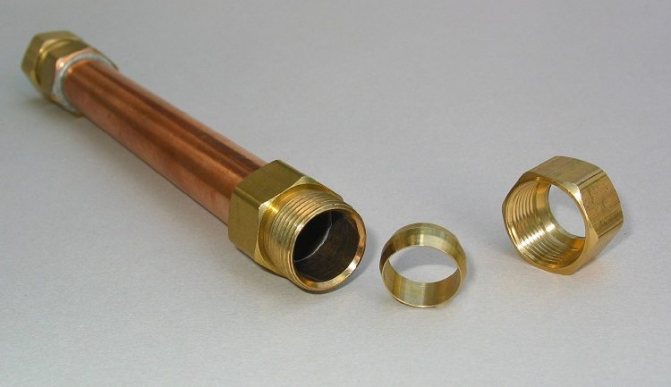

Believe me, everywhere! These lightweight and durable pipes take place in the design and laying of air ducts, and the crimp type of copper fittings is actively used in communication networks. Wherever you will not find a copper pipe - in heating systems and appliances, in air conditioners, in gas appliances and pipelines, in the water system - copper is always present. Some enthusiasts of experiments use copper pipes as an element of decor or interior - they take any shape and can be connected to any other pipe (and not only), are interesting for their unique color and brilliance.
How to mount?
Some of the installation recommendations were given above, however, if you are not sure that you can do the job efficiently, you better do not take it.
You can ask any familiar craftsman from the people or call a team or one professional. It's up to you to decide. But you shouldn't retreat from your decision to make a copper system.
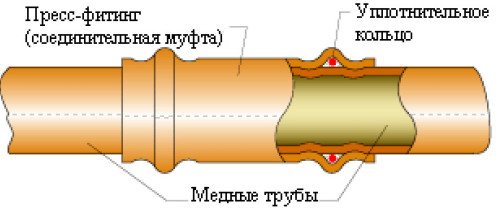

An extensive selection of types and directions of connections, tightness and reliability, environmental friendliness and aesthetics are not all the advantages of a copper pipeline. Do not forget that you can solder and weld these pipes, connect using threads and flanges, crimps and compression technologies.Copper fittings help you assemble the system the way you need it, rather than adapting to the "material", and it will be leakproof and practical, and the time you spend on installation will be much less than if you take advantage of other options and possibilities.
Successful construction work!
If your piping design requires repeated disassembly and reassembly, threaded copper pipe fittings are best suited for installation. Their difference from others consists in the presence of a thread on the outside or inside, with the help of which the connection takes place. Threaded fittings are quite practical, but they lag behind in terms of reliability, and, as a result, they need periodic monitoring of the condition of the connections.
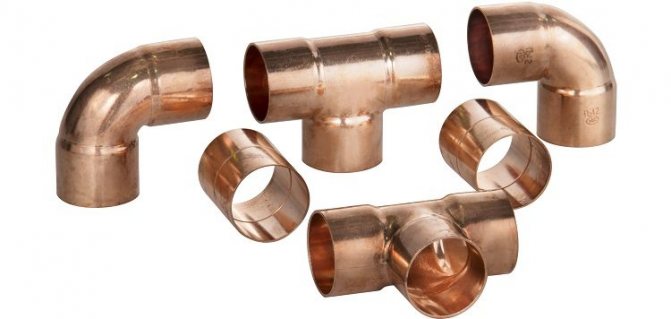

In this regard, in most cases, their use is advisable in easily accessible places of the pipeline. Another direction for the use of threaded fittings is the repair or reconstruction of the water supply system. Threaded fittings are quite practical, but they lag behind in terms of reliability, and, as a result, they need periodic monitoring of the condition of the connections. Brief description of threaded fittings Threaded fittings are one of the main types of connections. pipelines These are collapsible parts that are used to repeatedly connect system elements. Their design provides for the presence of an external or internal thread.
As a rule, this thread is cylindrical. Threads are provided both on the fittings themselves and directly on the pipes. Their advantage is reusability.
Threaded products are suitable not only for connecting elements, but also for installation with plumbing or pipeline fittings. The above-mentioned fittings can be classified as: uncoated; zinc-plated (zinc-plated); chrome-plated (chrome-plated); nickel-plated (nickel-plated) Naturally, plated fittings provide more reliable anti-corrosion protection. Threaded fitting belongs to one of the main types pipe connections. The range of threaded elements is huge. These are products that are different in type and design: elbows; tees; bends; nipples; couplings; plugs; fittings and so on. The material from which threaded fittings are made is also diverse: cast iron; brass; stainless steel; bronze; and, finally, copper. This is just about copper fittings and the further story will go. Copper pipes.
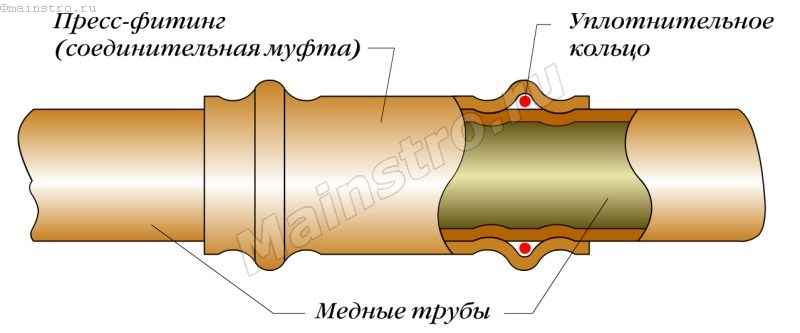

Connection features Brass and bronze fittings are suitable for crimping copper pipes. The tightness of the connection is ensured by the presence of a special compression ring inside the fitting. To perform the crimp, you need a wrench and a little effort when turning the nut.
No additional devices are required. Even if there is no experience in installing copper pipes, it will be easy to cope with such work. The disadvantage of such a connection is insufficient reliability. There are a number of restrictions on the pressure inside the pipes when connecting with the above method.
To maintain tightness, do not forget about prevention and timely tightening of the nuts. If, with frequent tightening of the nuts, a deformation of the fitting occurs, it is necessary to replace the failed connection element. Connection using threaded fittings is used mainly where there is no possibility of soldering copper pipes or it is necessary to combine pipes from different materials. If you decide not to use soldering when installing a water supply system, then the method using threaded fittings is ideal for you. copper pipes will stop your choice on the copper option.
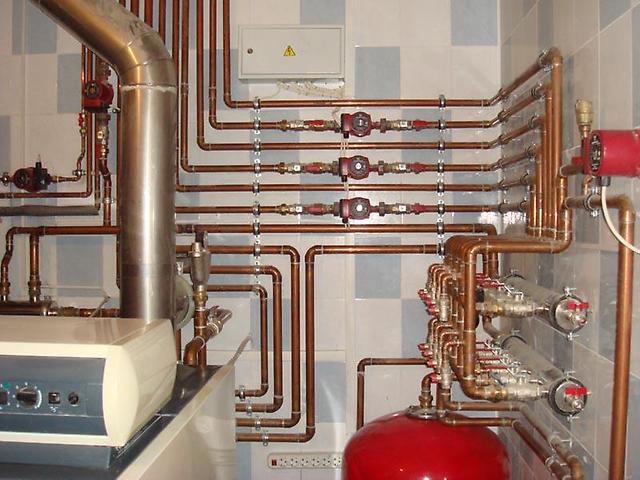

Another plus is high resistance to temperature fluctuations. There are two main types of installation.This is mounting by soldering and by means of threaded connections using ferrules. After reading the name of the above method, one may doubt the ease of installation.
But this is not the case. Simplicity and accessibility are the motto of this method. You don't need any special tools, just wrenches are enough.
And even with such an installation, there is no need to comply with fire safety techniques. When installing copper products, whenever possible, use homogeneous materials (copper and its alloys). This will increase the service life of the structure. You will need: a special cutter or a hacksaw for metal (with their help you will saw pipes into pieces of the required size, when using a hacksaw, do not forget to replace its blade with a new one); a calibrator; wrenches; a file (with its help you will clean the burrs at the cutting points); pliers; to remove the oxide film you will need a sandpaper. These are tools, and the following materials are needed: copper pipes directly (with a threaded connection, a stock of a couple of meters will not hurt); fittings (tees, adapters, etc. .) depending on the plumbing scheme; special fum-tape for sealing. And now about the order of work. First, you need to saw off the desired section of the pipe (check with the diagram). If you are using pipes with insulation, then do not forget to remove the protective layer at the site of the future connection. Make a cut and remove the insulation. Using a file, remove burrs at the cut. Prepare the fitting: first put on the nut and then the ferrule. Butt the nut with the fitting and tighten the threaded joint.
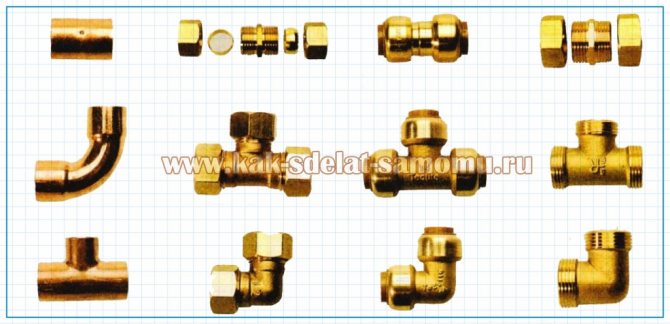

Tighten the nut slowly, first by hand, and then with a wrench. If, when installing copper pipes, it is necessary to connect to a steel pipe, then it is appropriate to use fum tape. It is screwed onto the thread, then the fitting is screwed on. and the tight connection is ready. When installing copper products, whenever possible, use homogeneous materials (copper and its alloys).
This will increase the life of the structure. Useful tips for installing copper pipes When installing copper products, whenever possible, use homogeneous materials (copper and its alloys). This will increase the life of the structure. If this advice does not work, then you need to adhere to the following rule: do not allow galvanized unalloyed steel to be connected to copper (with such a connection, you will get faster corrosion of steel elements due to electrochemical processes). pipes.https: //experttrub.ru/youtu.be/YyD0_qTuj4Y "width =" 640 "height =" 425 "style =" max-width: 100% "> The choice of fitting depends on the purpose of the pipeline. A professional approach to the connection, high-quality materials will increase the service life of the structure. The size of the fitting for copper products is easy to choose, since there is a standard and nomenclature.
Products manufactured by different companies are interchangeable. The size is determined in accordance with the inner diameter, wall thickness, socket depth and gap width. Types of fittings depending on the purpose By purpose, threaded fittings for copper pipes are classified as follows: various angles (90 or 45 degrees). Their purpose is to rotate the product to the desired degree; collectors or tees, allowing you to make a branch from the main structure; crosses.
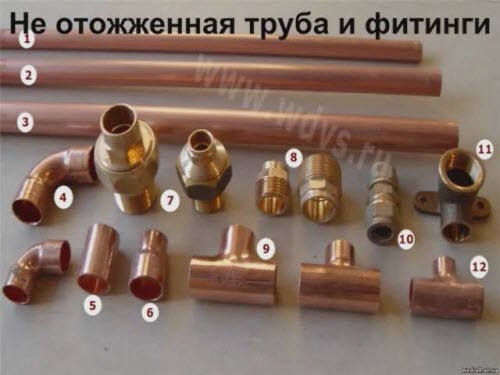

Provide the ability to carry out independent branches while maintaining the main direction; couplings. Designed to connect straight sections with the same diameter or different. Also suitable for joining elements made of different materials.
plugs, caps - overlap the end of the copper system; fittings carry out the outlet of a flexible rubber tube, etc. Fields of application of copper pipes and fittings The competitiveness of copper pipes and fittings made of copper remains quite high in our time, even in the presence of other high-quality materials. All this is due to the positive qualities of copper.Copper does not allow microbes and bacteria to get into the water, does not oxidize and is not subject to rust, the products are quite flexible and reliable, resistant to both high and low temperatures. ”640 ″ height =” 425 ″ style = ”max-width: 100%”> When using copper pipes, install duct networks.
Copper crimp fittings are successfully used in the creation of engineering communication networks. Gas supply, heating, air conditioning systems, water pipes - none of these industries can do without the use of copper products. Not only because of the high quality, but also as an original element of the interior in the modern or high-tech style. Designers are also attracted by the ease of installation, copper pipes are easier to cut and various bends than others.
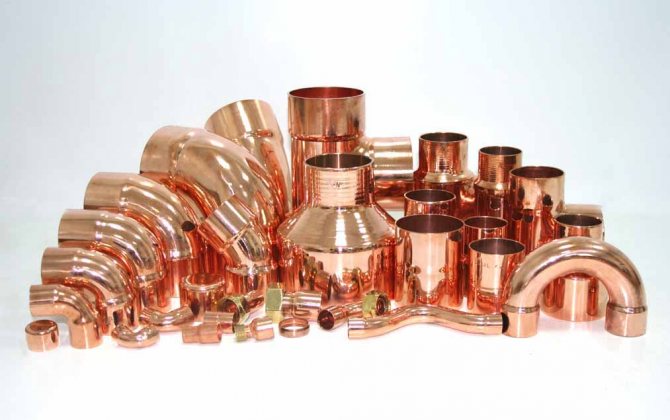

Many inhabitants associate the durability and reliability of the pipeline precisely with the use of copper pipes in household communications. For a long time, this metal has been used in plumbing, sewerage and heating circuits in order to prove itself exclusively from the best side.
The presence of special couplings and fittings facilitate the connection of copper pipes, which allows you to carry out or change them yourself. Depending on whether external or internal fastening, either a split or one-piece method of mounting the circuit is used.
Installation of copper pipes by soldering.
Soldering is the most common way of connecting copper pipes during the installation of communication systems. This operation requires some experience - after all, the performance of the connection depends on how correctly it is performed. It is not for nothing that when installing industrial pipelines made of copper, craftsmen who have a special permit for working with copper products are engaged in soldering or welding pipes.
The whole process consists of several stages.
- Preparing pipes for brazing.
In order for the connection to be of the highest quality, the pipes must be thoroughly cleaned before soldering. In the event that the product has been cut, the edge is first processed - they remove burrs and other irregularities that can interfere with the connection or further impede the passage of water through the pipe.
After that, it is required to remove the oxide film from the edge of the pipe. Remember that it should be removed only from the surface that will directly participate in the connection. The fact is that this film also performs protective functions - that is, it protects copper from corrosion, therefore, excessive diligence in its removal can negatively affect the durability of the pipeline. This can be done with a sandpaper or a special copper brush. After that, the pipe surface must be cleaned of any dirt, grease, dust. Finally, wipe the edge of the part with a clean dry cloth.
Note! Do not use coarse sandpaper or metal brushes for cleaning copper pipes that are not specifically designed for cleaning copper. Also, masters do not advise using abrasive cleaners to remove dirt from the pipe surface. All this can leave deep scratches on the copper, which will interfere with the soldering process.
If a pipeline for cold or hot water supply is being assembled or copper heating pipes are being installed, the connections can be made without the use of fittings. The main requirement is that the temperature of the water passing through the pipes should not exceed 110 degrees C. In this case, an additional operation is the expansion of the end of one of the pipes so that another pipe enters it and there is enough space for the solder. This can be done using a pipe expander.
- Assembling the connector.
Before proceeding with the assembly, the edge of the pipe that will enter the fitting or other pipe is covered with a thin layer of flux. It is necessary in order to protect copper from oxidation, which invariably occurs when it is heated. In addition, the flux does not allow foreign substances to settle on the pipe surface, which can have a negative effect on the strength of the joint. It is worth noting that some types of solders do not require the use of a flux - for example, copper-phosphorus solder, which is used for high-temperature (hard) brazing when connecting copper to copper.
Note! Flux is a fairly aggressive substance with high chemical activity. When applying it, certain safety rules must be observed. Gloves should be used to handle the flux as it is harmful to the skin. It is best applied with a brush. In addition, this composition negatively affects the copper itself, therefore it must be covered with a thin layer, and the excess that appears on the surface of the pipe after it is docked with a fitting or other pipe should be removed immediately.
After applying the flux, the end of the pipe is inserted into the fitting until it stops. In this case, there should be a gap between the pipe surface and the fitting sufficient for the solder to enter (but not more than 0.4 mm). If the connection is made without a fitting, the end of one pipe is inserted into the flared end of the other to a depth equal to or slightly greater than the diameter of the pipe.
- Warming up the connection.
The connecting unit must be evenly heated over the entire diameter of the pipe. For this, a gas torch or blowtorch is used. You can also warm up the connection using an industrial hair dryer - this method is considered safer, since there is no open flame. If a burner with one nozzle is used for heating, then its flame is gradually conducted along the circumference of the pipe, without lingering in individual sections in order to prevent them from overheating.
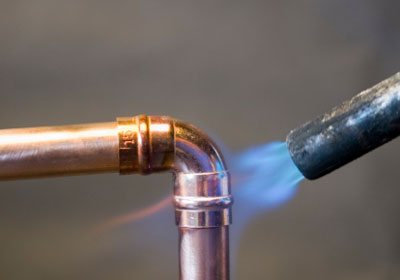

Note! Heating should be sufficient, but not excessive - that is, melting of the metal is unacceptable. It is not required to heat the solder bar itself. And to determine that the temperature is sufficient, you need to attach the edge of the bar to the place of heating - if the solder begins to melt, then you can start soldering. The required temperature is also determined by the state of the flux - if it contains tin, then when the pipe heats up to the required values, silvery drops are formed on the flux.
- Soldering the seam.
After the junction is warm enough, proceed directly to the soldering. The edge of the solder bar is inserted into the gap between the pipe and the fitting (pipe and pipe). Then the bar moves along the entire diameter of the joint following the burner flame, melts and gradually fills the entire gap.
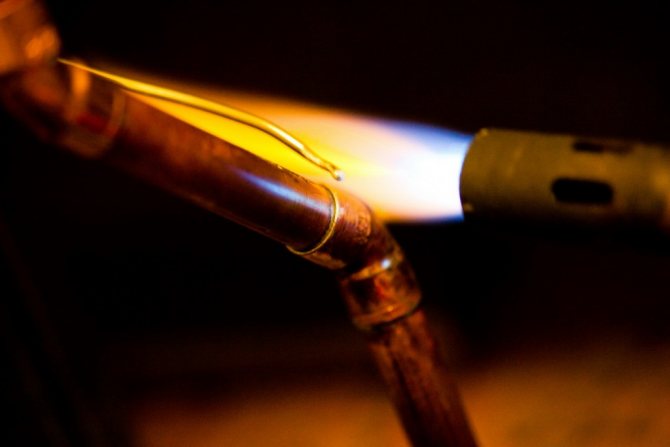

- The final stage.
The compound should now naturally cool at room temperature. Care should be taken to keep the knot stationary. To do this, the pipes to be connected are laid on a flat place so that during the solidification and crystallization of the solder there is no deformation of the assembly. You can change the position of the pipes no earlier than an hour after the end of the soldering.
After the solder has solidified, you can proceed to the next connection.
Note! When all pipes are connected, the resulting system must be thoroughly rinsed with hot water. This will help remove flux residues from the inner cavity of the pipes, which negatively affects the durability of the pipeline, as it can cause corrosive processes. Flushing will also help remove other foreign matter from the system that gets there during the installation process. The outer surface of all joints should also be thoroughly cleaned of residues of flux and solder.
Push-in fittings, their types and applications
The modern market offers a wide range of auxiliary parts for connecting copper pipes without soldering (threaded method, for example) or by high or low temperature welding. Copper is a very easy and malleable metal, so even a beginner can handle it with the tools.
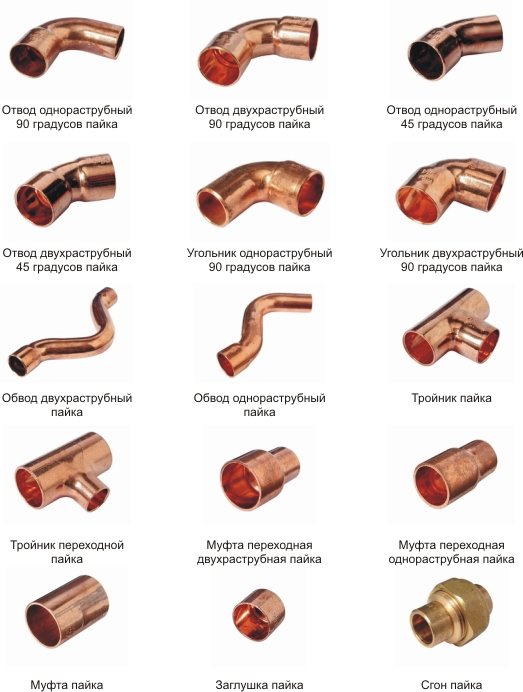

Push-in fittings for copper pipes are the easiest way to install line elements, because they are based on a clamping ring that is put on the tube and a nut that fixes the clamping point. This method of connection is quite simple and does not require special tools.
Most often, similar fittings for copper pipes are used:
- When conducting a line through which hot or cold water, gas or oil circulates. In pipelines in which the chemical medium does not exceed a heating of 175 ° C. The pressure in such systems should not exceed 16 atmospheres.
This type of installation is considered very reliable and tight, and the collet connecting fittings for copper pipes presented on the market today are available with an inner diameter of 8 mm to 100 mm. If pipes of a larger diameter are to be installed, then another method of joining them should be chosen.
There are the following types of collet fittings:
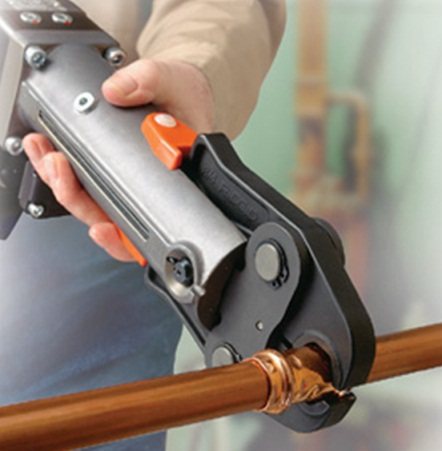

- Coupling for copper pipes, as a rule, is made of copper or the alloys in which it is included. Its function is to join contour elements of the same metal and the same diameter. Copper adapters for copper pipes are used to connect pipes of different diameters. They can also combine products from different materials, but it is better to choose brass counterparts. The branch connector for copper pipes is an angle that allows you to join the network elements at an angle from 45 ° to 120 °. When separation of the flow is required, a collet cross or tee is used .When connecting a flexible hose to a pipeline element, a union is used.
Push-in fittings are the most commonly found parts in domestic and industrial piping. This is due to their following advantages:
- They are affordable. Simple enough to use. Quite a wide range offers models for lines of any length and complexity. To work with them you do not need special equipment and a beginner can handle them. Push-in fittings provide a reliable tight connection. They are durable, like pipes. made of copper, but if necessary, they can be reused or as a temporary docking.
Since the clamping point weakens over time from loads and requires tightening, such a connection is used exclusively when external fastening of copper pipes to a wall, for example, is carried out. Access to the docking point is an important factor for such a pipeline.
Installation steps:
- Pipes are cut into lengths according to the diagram and cleaned. If necessary, calibration is carried out to obtain an even hole. A nut is put on the end of the tube, and then a collet. The end of the fitting with rubber bands is inserted into the tube. The clamping nut is screwed by hand onto the thread of the fitting and gently into it. the collet is tightened. The nut should be tightened with a wrench, but allowing for pinching.
Pulling up the collet, you need to make sure that there is no skew, otherwise all the work will have to be done again. When tightening the nut with a wrench, it is important not to overdo it, otherwise the copper will crack, and this piece of pipe will have to be cut off.
Compression fittings
It is the crimp ring for copper pipes that ensures the reliability of joining the individual elements of the pipeline. Above was described how to use a push-in fitting with such a ring on normal pipe ends. When a flare connector for copper pipes is required, compression fittings are also used.
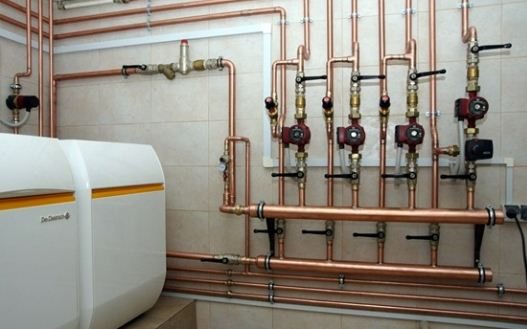

Pipe flaring can be done by yourself if you have special equipment. To widen the end to the desired size, it is better to use a flare tool, with which you can make the necessary calculations and calibrate.
Compression fittings for flared copper pipes consist of a sleeve and a clamping nut and are just as easy to use:
- A coupling is put on the prepared and cleaned end of the tube. The end of the other pipe is inserted into the expanding machine or expander and rotated until it forms an edge at an angle of 45 °. The second end of the coupling is inserted into the finished rolling and tightened with a nut.
Compression fittings for copper pipes are used exclusively in outdoor piping and are part of the service system. If they were used in annealed (soft) products, then a visual inspection is enough for preventive checks, while in unannealed ones, tightening the clamping nuts will be required.
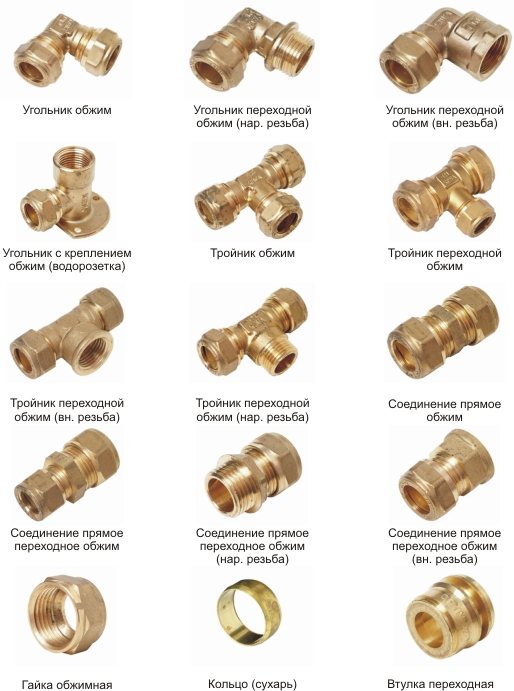

The connection of copper pipes with crimp fittings is most often used when carrying out repairs to a circuit or as temporary parts when wiring a new line. They are reliable, durable, but require periodic testing of the quality of the seal.
Features of different connection methods
Installation of nodes on copper pipelines is carried out in the following ways:
- welded - heated to a temperature close to the melting point,
- capillary - soldering at low temperature,
- threaded - twisting into a thread,
- crimp - using compression fittings,
- crimping - using press fittings and press tongs.
Note! Welding and capillary methods are only applicable for connecting copper pipes to each other or to copper fittings. Threaded, crimp and press fittings can be used not only copper, but also steel or brass.
Each of the methods has the nuances of the installation work and the features of the resulting assemblies. Welding and brazing make it possible to form reliable one-piece assemblies, but for their implementation, welding equipment is needed, and its use is not always possible. The rest of the methods can be used for the installation of copper pipelines in rooms where finishing work has been carried out, in the immediate vicinity of other communications, including next to gas pipes.
Welded connection of copper pipes
Copper tubular products are only butt welded.
The work is carried out in the following order:
- Asbestos-cement sheets are laid under the elements to be connected to reduce heat loss and accelerate heating of the pipe and fitting.
- The ends of the fitting and pipes are heated with a high-power gas burner.
- The fused sections are joined and pressed tightly against each other, avoiding distortions.
- The cooled seam is forged to reduce the graininess of the formed burr.
Note! Copper cools easily, so heating and bonding should be done as quickly as possible. If thick-walled pipes are being welded, a second burner is connected, with which the melted sections are heated, not allowing them to cool down.
Capillary connection or brazing
Soldering is a more popular method of mounting copper assemblies than welding. Firstly, this method does not require strong heating of the parts to be joined and subsequent forging of the seam. Secondly, there are no restrictions on the time of work, since it is not pipes and fittings that need to be heated, but solder - a thin wire made of technical copper.
Threaded fittings
Threaded connection of copper pipes is the most common, since they can be easily replaced or reused on occasion. Fittings of this type can have both external and internal cylindrical threads.
The pipeline is far from the only place where such parts are used, and often they are part of the connections of plumbing elements. By configuration, threaded fittings for copper pipes are divided into:
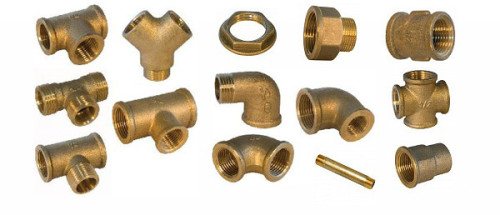

- elbows; nipples; couplings; plugs; bends.
For the connection of copper elements, fittings should be selected from brass, copper or alloys with its content.
If you are going to use a threaded fitting on a soft copper pipe, it is recommended to "secure" the joint with a support sleeve, which will allow you to tighten the nut tightly without deforming the metal.
Mounting choice: detachable vs one-piece
To connect copper pipes into a single piping system, you can use several ways to join them. Various plumbers use crimp and press fittings, welding or soldering. But before you start work yourself, you need to decide - be one-piece pipeline or detachable.
There are three installation technologies for connecting copper pipes:
- electric welding;
- soldering with a torch or electric soldering iron;
- pressing.
All these technologies can be applied in the formation of both detachable and one-piece systems. There is more a question of using a variety of fittings and adapters or rejecting them.
Press fittings
The one-piece connection is considered the most reliable, and it is it that is used when the pipes are to be "hidden" in the floor or wall. One of the elements of such a system are press fittings for copper pipes.
At the heart of these parts are special polymer seals, and to assemble the pipeline you will need:
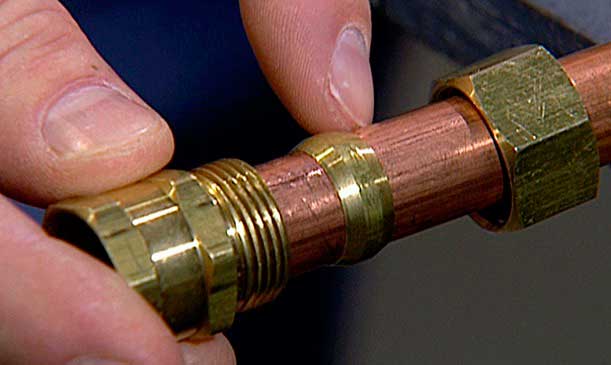

- Cut and strip the pipe to the required length. Calibrate the hole. Insert the pipe ends into the press fitting. Squeeze the joint with a copper pipe clamping pliers.
This method of connection does not require heating of parts and is considered one of the fastest. If the amount of work to be done is small, then you can purchase a manual press for copper pipes, for which, apart from little physical effort, nothing is required. It provides the required tightness by compressing the connecting fitting against the seal ring.
The electro-hydraulic copper pipe press is used by professionals when laying long lines with numerous connections. More expensive equipment has replaceable couplings, thanks to which it is possible to connect pipes of different diameters from any manufacturer.
To carry out repair or installation work on your own, you can rent a press for copper pipes, which is more profitable than spending money on a tool that may not be needed the next time soon.
Fittings types
All connecting fittings are divided into several types according to their functions:
- Straight - for direct connection of two pipes of the same diameter. These fittings are called couplings, and the body is usually in the shape of a cylinder.
- Transitional - for direct connection of two pipes of different diameters. Adapters, or reducers, have a complex shape: two short cylinders of different sizes are connected by a truncated cone.
- Corner, or swivel, - for connecting identical pipes at an angle. Such fittings are called elbows or corners, the body bending angle is from 15 to 90 degrees.
- Splitter - for combining two or more streams or dividing one stream into several. Tee bodies have three branch pipes, the diameters of which may vary. Cross bodies are made up of four or more spigots connected at right angles.
- Sealing - to cover free pipes. These shaped pieces, called plugs, are a cap or plug.
Soldering
It is believed that soldering is the most reliable way of joining any pipes, and copper pipes are no exception. It can be produced by high temperature or low temperature connection. The latter includes fittings for copper pipes for soldering.
Many consumers prefer to deal with parts into which the manufacturer has inserted solder at the manufacturing stage.As a rule, it is placed in a specially made cavity in the socket, and most often there are fittings with low-melting solder, for which the temperature of a blowtorch or a building hair dryer is enough to heat it.
The connection technology is very simple:
- The ends of the pieces of copper pipes are cleaned. They are inserted into the fitting (you can use an American for soldering copper pipes). Heat the part with a blowtorch or a hairdryer so that the solder melts and spreads, soldering the pipes with it. Do not move or move the joint until the joint has completely cooled.
This simplest method of brazing copper pipes, although it is known to the domestic consumer and is gradually gaining his sympathy, is still most popular in Europe and Asia. Some of the crafters prefer to see how much they are using solder by using hard grades and using high temperature equipment.
The main types of copper pipe connections and tools for this are shown in the table below.
Method soedineniyaDetaliInstrumenty sostykovkiVid soedineniyaNizkotemperaturnaya capillary spaykaMyagky solder fitingiGorelkanerazemnyyVysokotemperaturnaya capillary spaykaNalichie braze fittings (or without them) AtsetilenovayagorelkanerazemnyyKapillyarnaya fitting paykaFitingi with an inner solder (soft) Building dryer, gorelkanerazemnyyPressovaniePress - fitingiPress - kleschinerazemnyyKompressionnoe soedinenieObzhimnye fitingiGaechny klyuchnerazemnyySamofiksiruyuschie detaliSpetsialnye locking sleeve and fitingiGaechny klyuchrazemnyyFlantsevaya sostykovkaRastrubnye flantsyGorelka and nut split wrench
As a rule, for independent work, consumers choose special fittings, which, with a small investment of time and money, provide a high-quality connection of copper pipes. Any of the listed types are suitable for joining a pipeline made of this material. The choice depends on the experience of the master, the complexity of the circuit and the external or internal installation method.
Solder connection
One of the first options should be to consider the connection of pipes using soldering. It should be noted right away that there are two ways to solder copper pipes - these are low-temperature and high-temperature methods. As you might guess, the difference between them lies in the temperature at which soldering takes place. In the low-temperature mode, the elements are heated up to 300 ° C and solders with a low melting point are used. High-temperature brazing is used for the installation of systems under significant stress, for example, in industry; the use of this technique for private purposes is impractical.
When joining copper pipes by brazing, they usually use connecting elements called fittings, tin-based solders and fluxes. The pipe connection process is as follows.
- First you need to cut the pipes to the correct size. In this case, you should be careful and be sure to take into account the dimensions of the fitting itself.
- The ends of the pipes to be connected must be carefully inspected for various defects such as cracks, chips or burrs. Their presence is unacceptable, since it can affect the tightness of the connection, therefore, in case of detection, all defects must be eliminated.
- If the ends of the pipes are in order, then you can proceed to the connection. It should be noted that there are several connection options, for example, you need to connect more than two pipes or pipes of different diameters, so fittings should be selected that match the purpose.
- The end of the pipe and the inside of the connecting element are treated with flux - a special compound that acts as a degreaser, preparing surfaces for a stronger connection.
- After that, the end of the pipe is inserted into the fitting and heated. The fitting is selected so that its diameter is 1–1.5 mm larger than the pipe diameter. The pipes are heated with a gas burner. The space between the elements to be connected is filled with a consumable solder. The modern market offers a variety of ready-made solders that are easy to use, so there should be no problems with this.
- After the solder is evenly distributed over the entire circumference, the parts to be joined should be left until the solder has completely solidified, forming a strong connection.
- The final step should be to check the connection, that is, the water must be turned on. Thus, not only will there be a check, but also the removal of flux residues that may remain on the inner surface of the pipes, which is undesirable, since it can cause corrosion.

